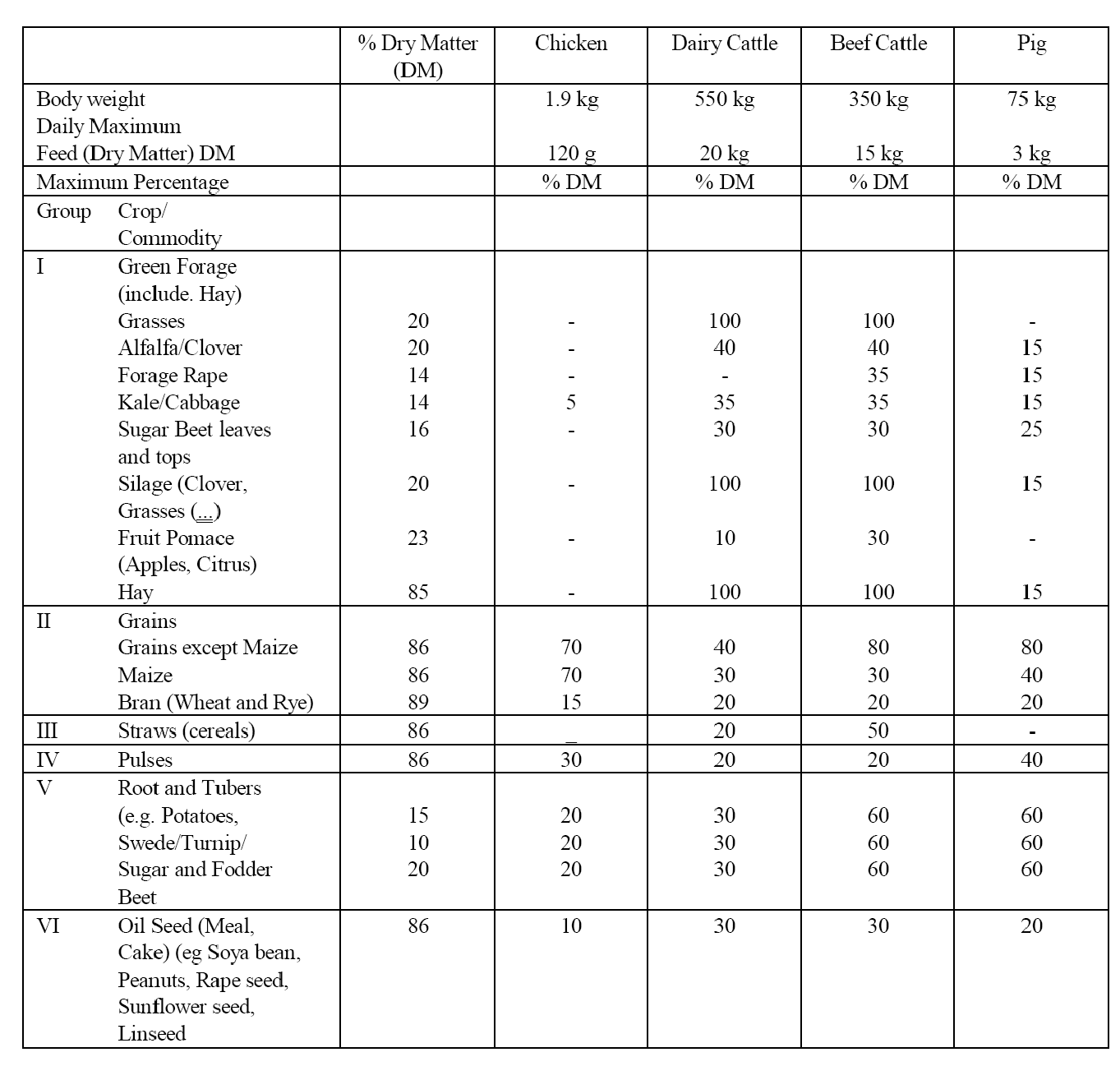Composition of feed
When establishing a pesticide control for feed, an evaluation of the division between human consumption/animal feed versus the daily feed ration for animals is needed to estimate which feeding stuff to attach importance in the control. A starting point could be to focus on the crop/products which make up the largest fraction of an average feed ration for a given type of livestock. An important crop for animal feed is maize. Table 3 1 shows that Europe is almost self sufficient and that animals consume 83% of the production of maize. An example is given in Table 3 2, where almost half of the daily feed ration for a Danish dairy cow is maize silage. Besides maize, half of the EU wheat production is consumed by animals and 75 % of barley and oat production. But the production of barley and oat is smaller than the production of maize, wheat, and rice.
According to Table 3 3 the proportion of soy in animal feed can be 10-30% of the dry matter, depending on the livestock species. For a diary cow this means that up to 6 kg dry matter per day can be accounted for by soy cake and meal.
| Kg Dry matter | |
|---|---|
| Clover grass silage | 3,5 |
| Maize Silage | 9 |
| Straw | 0,5 |
| Minerals | 0,2 |
| Compound | 7 |
| Total | 20,2 |
Levels exceeding MRLs in soy products from the UK monitoring are listed in the Annual Report of the Pesticide Residues Committee 2006 of samples collected throughout 2006. The main findings were:
- Out of 60 samples of soy milk, five samples contained endosulfan.
- Out of 60 samples of soy pieces and tofu, 11 contained residues of glyphosate, five contained residues of endosulfan and one contained residues of diazinon .
In the Guidance document for Directive 91/414, Appendix G a table gives examples of the composition of feed for pigs, beef cattle, dairy cattle and hens. The table is included in this document as Table 3 3. According to this table beef and dairy cattle can be fed on 100% grass, silage or hay. A major constituent in feed for pigs can be grain (up to 80%) and root and tuber vegetables (e.g. sugar beet) (up to 60%).
From the information presented here it can be argued that residues occurring in feed materials such as grass, silage, hay and cereals are of great relevance if the residues in feed are to be monitored.
Table 3 3. Maximum feed intake expressed as percentages for certain feeding stuffs frequently used for four indicator livestock species. The table is from the Guidance document for Directive 91/414, Appendix G: Livestock feeding studies.

Find more information in the menu below:
Published 12-07-2010, 12:39:03
Top of Page
